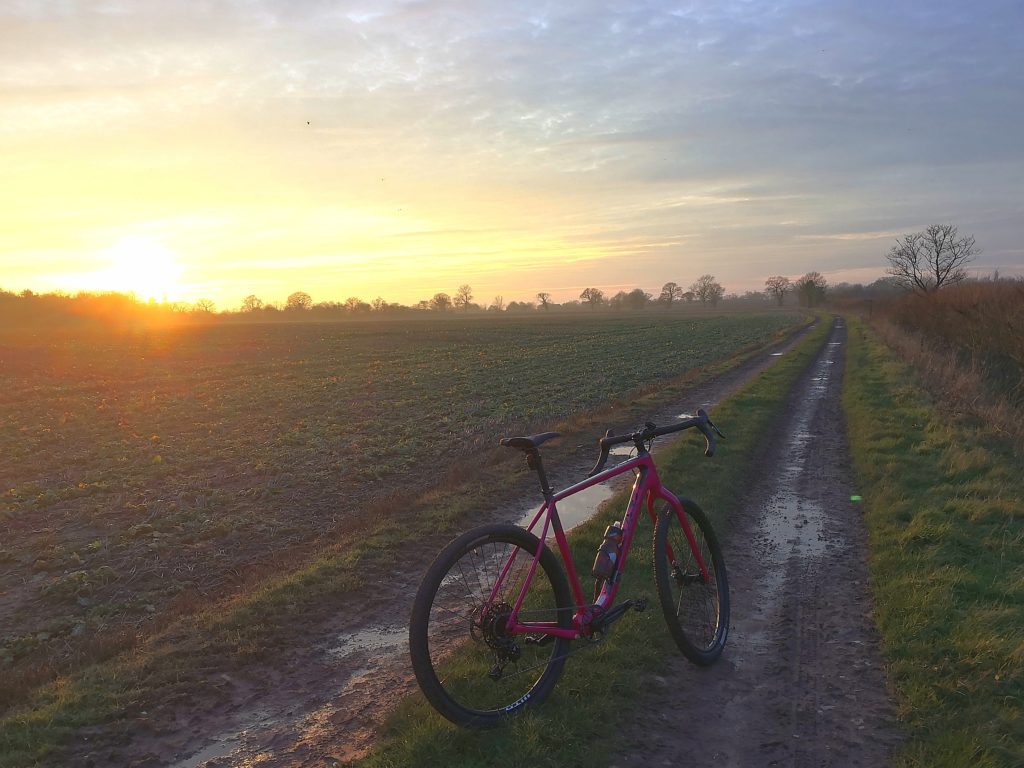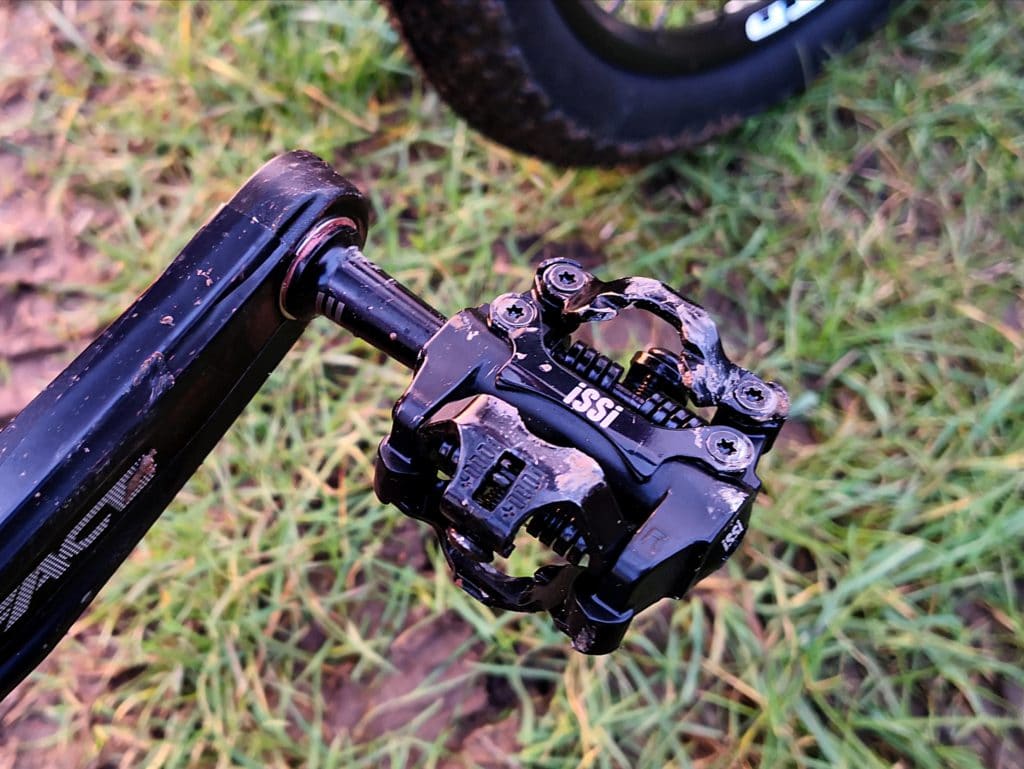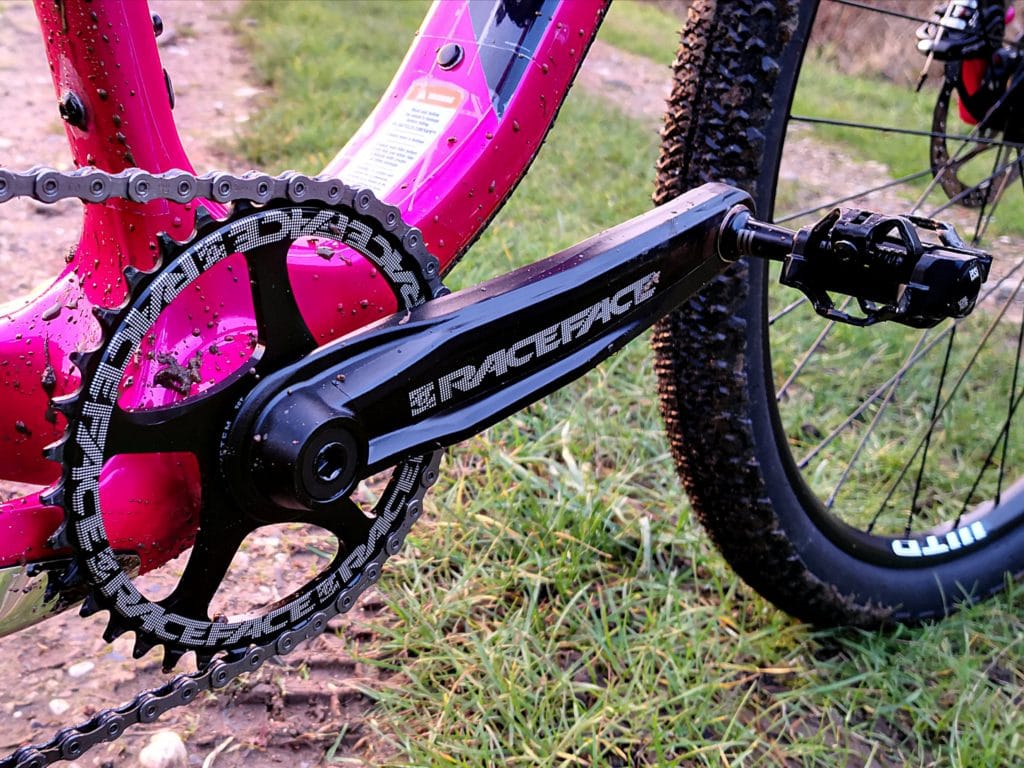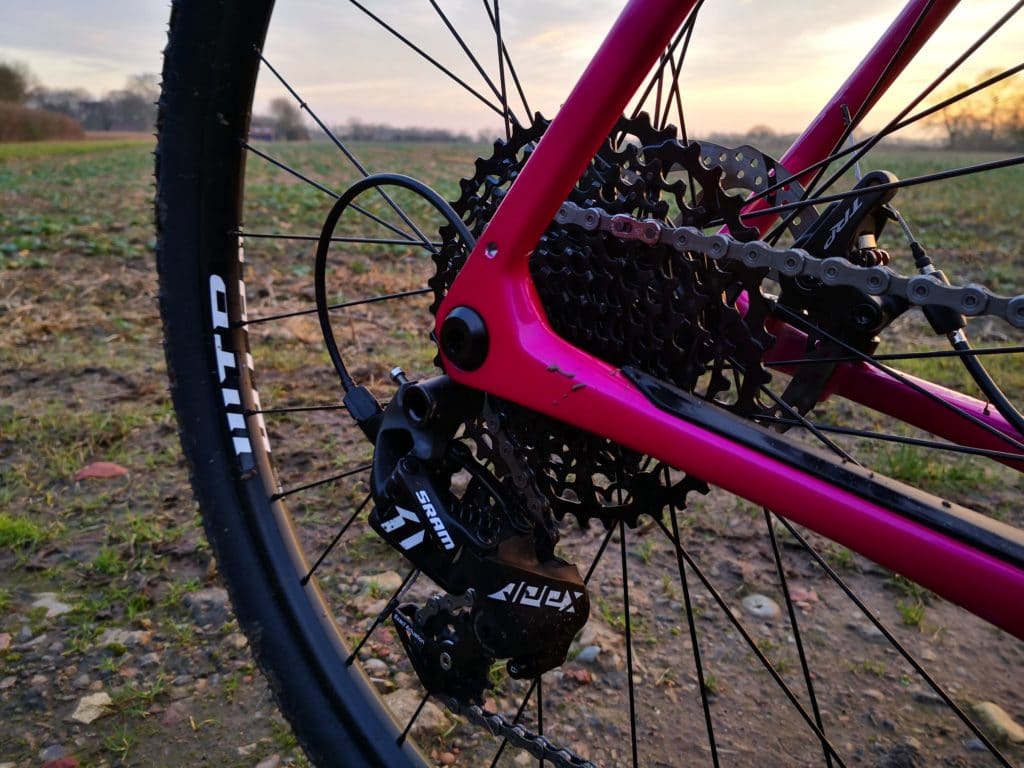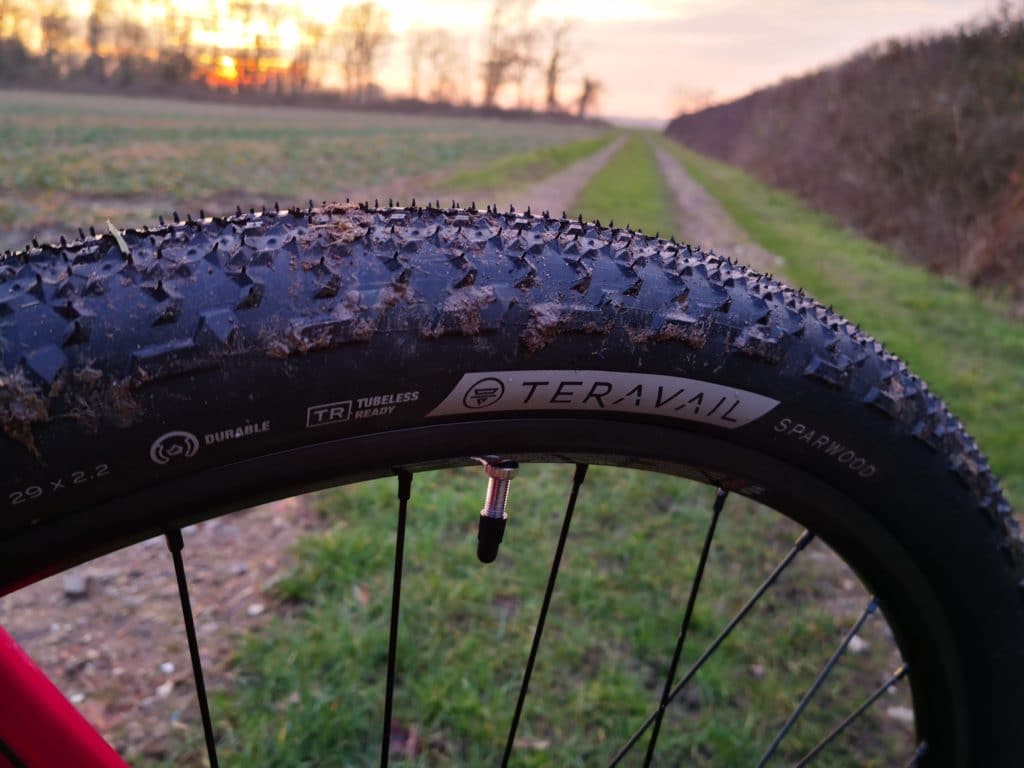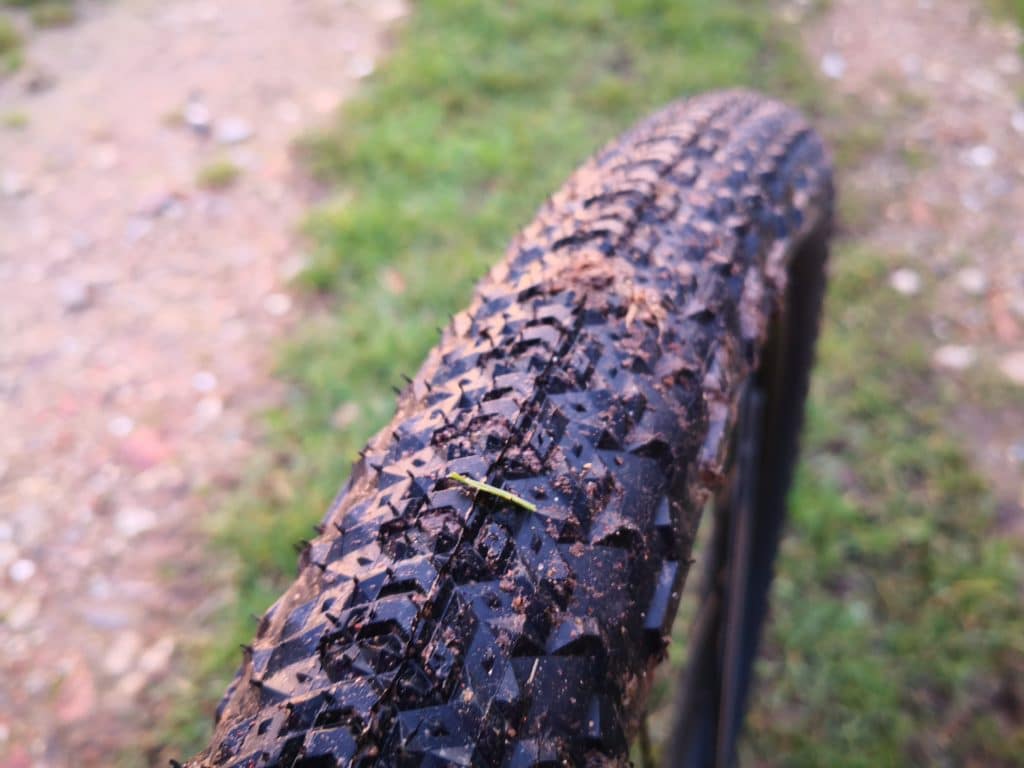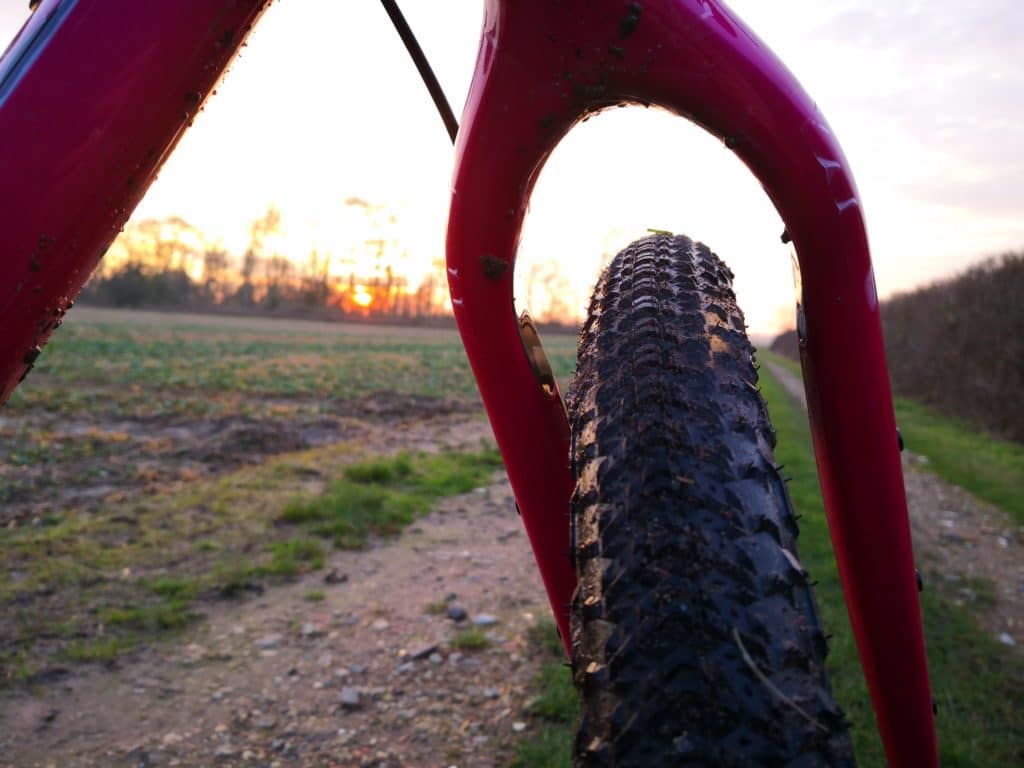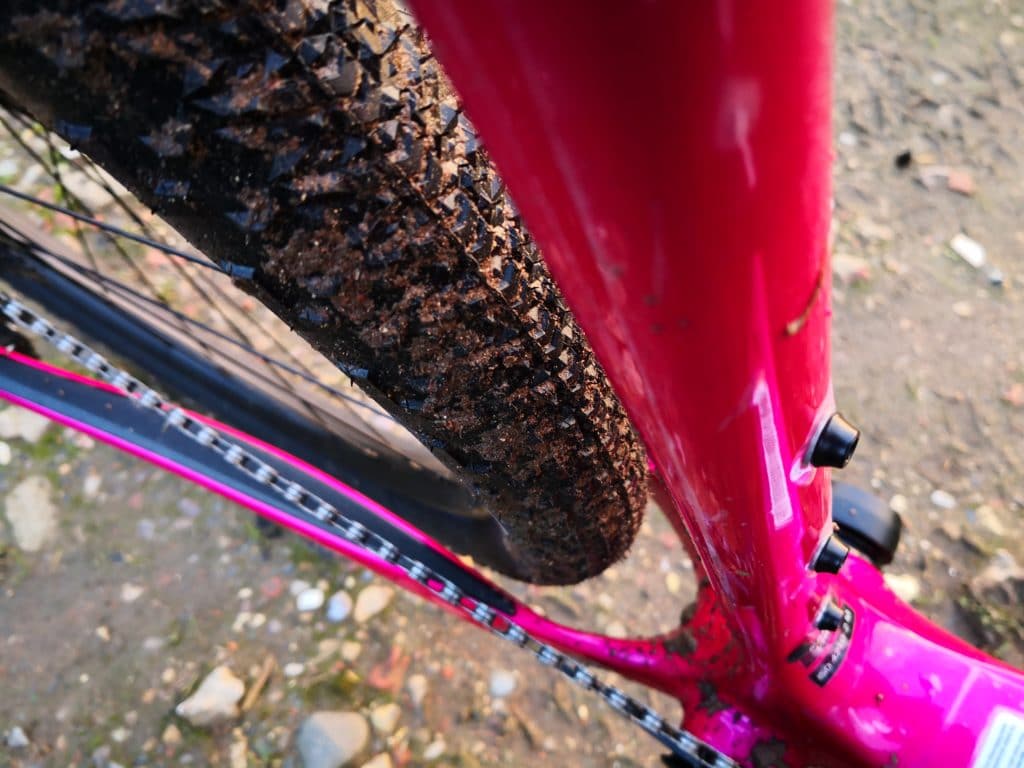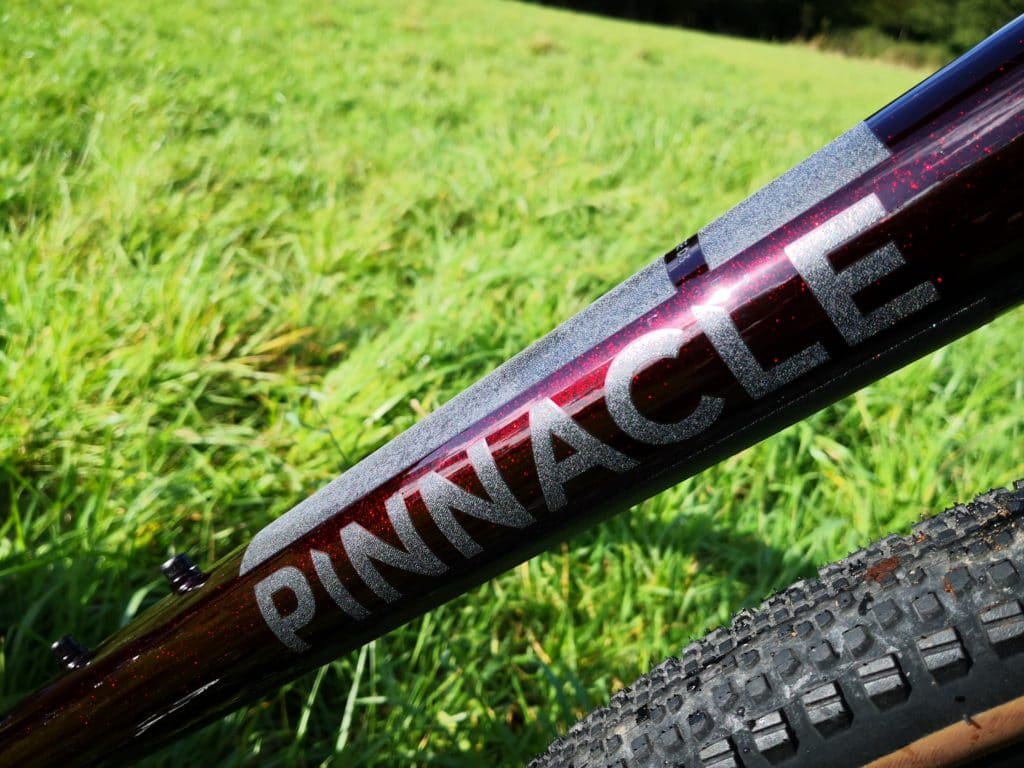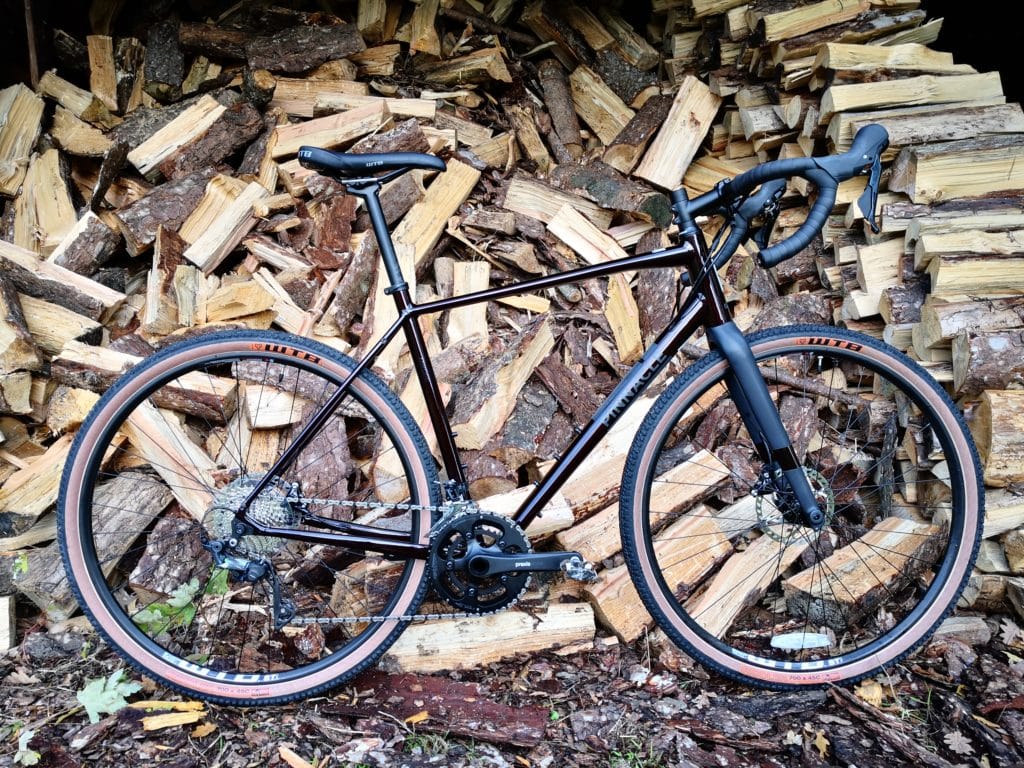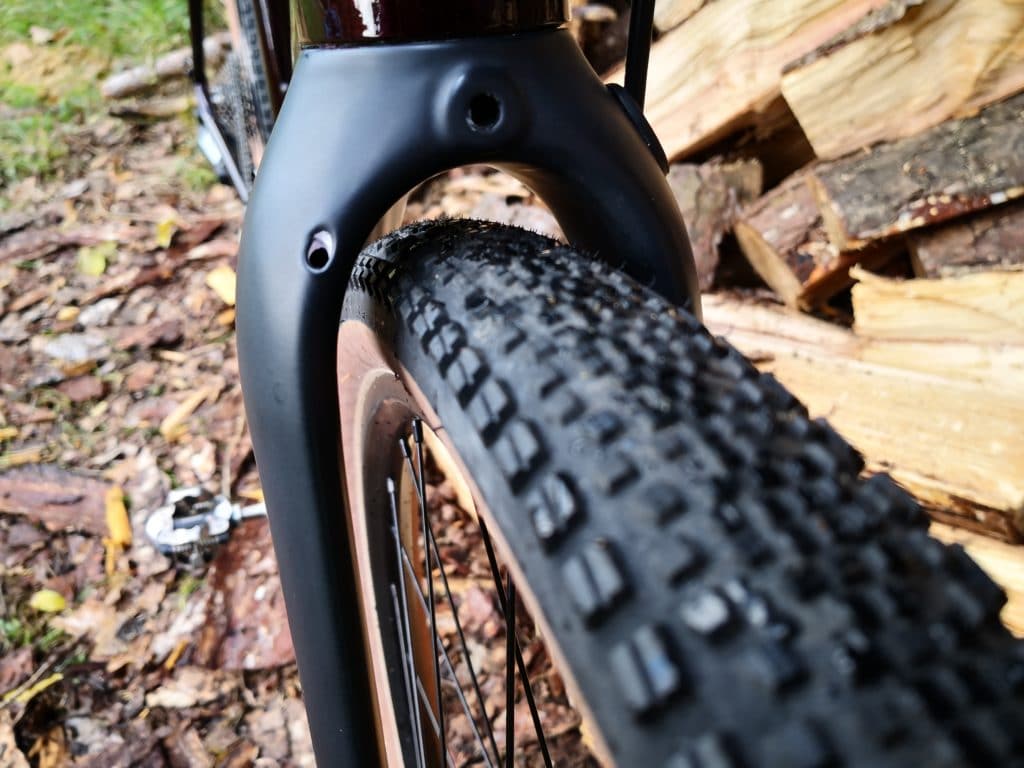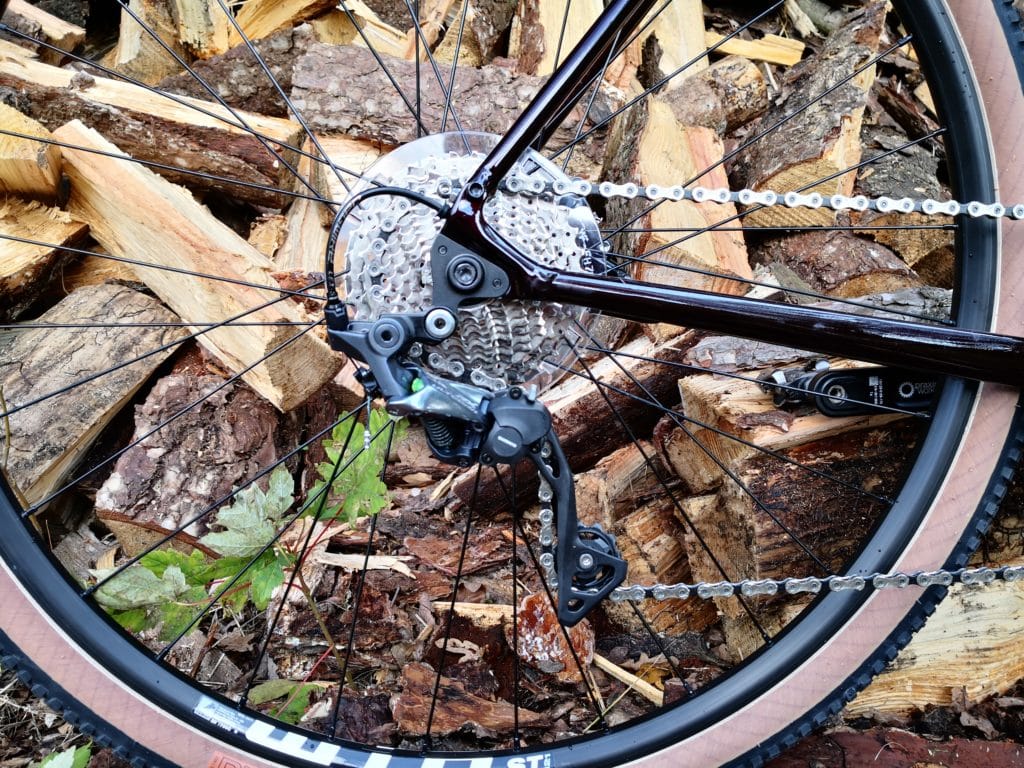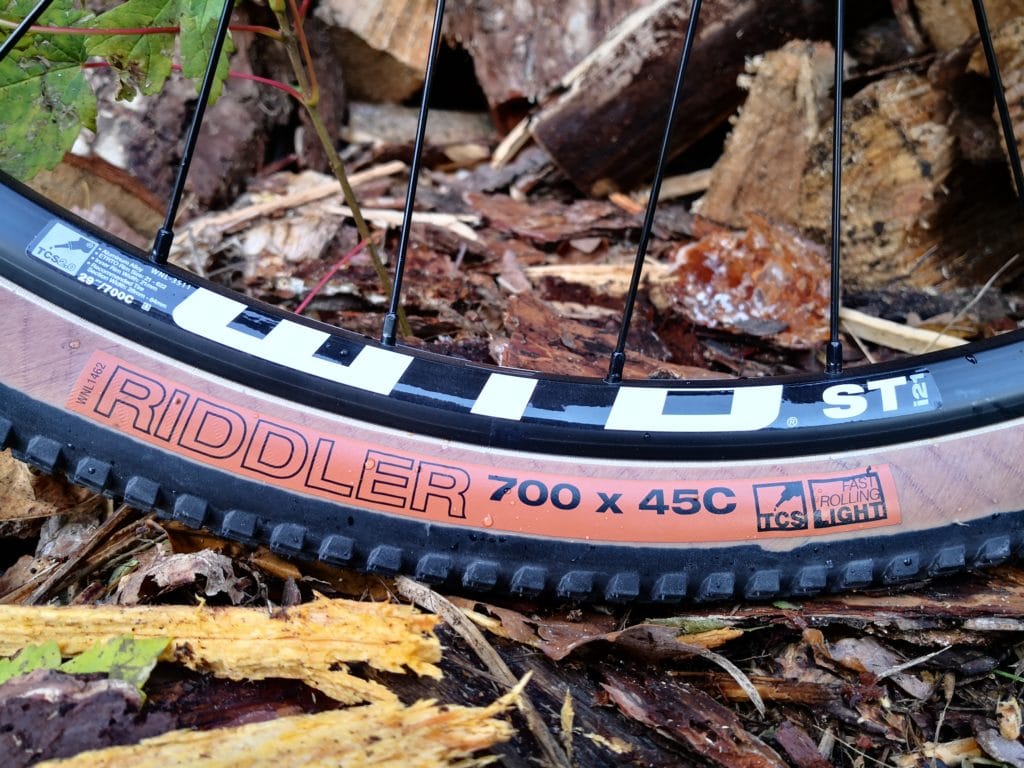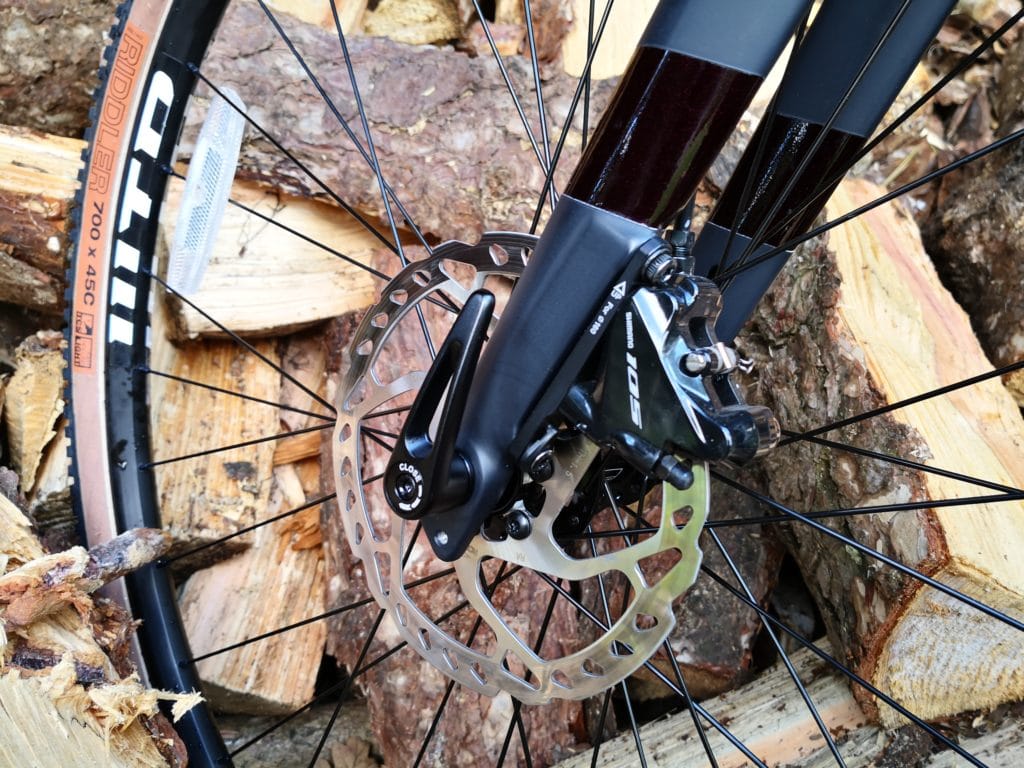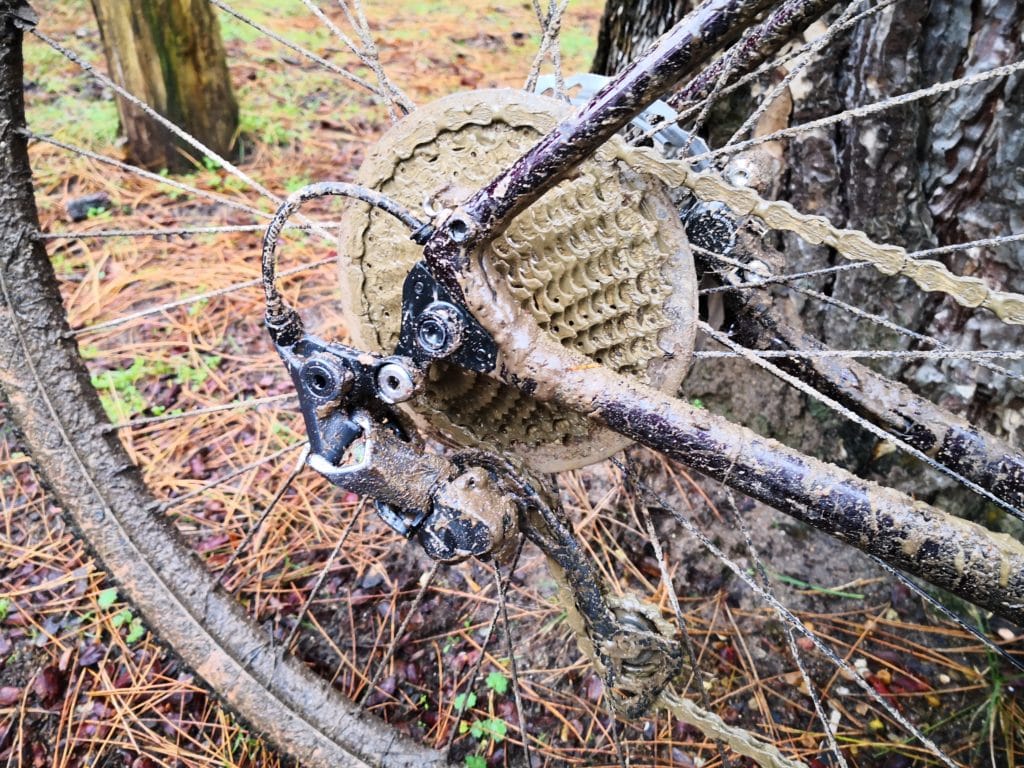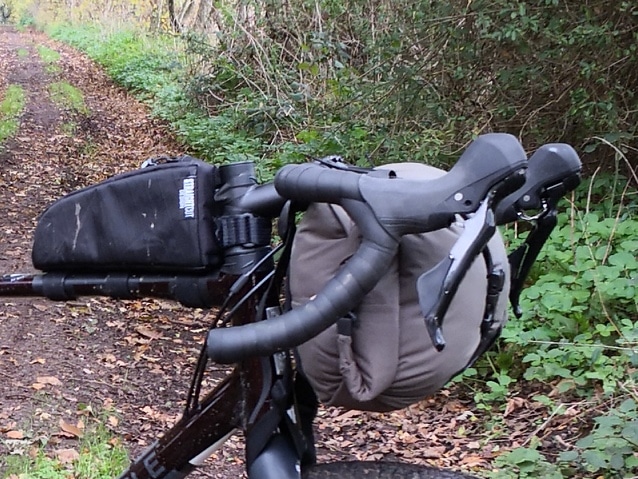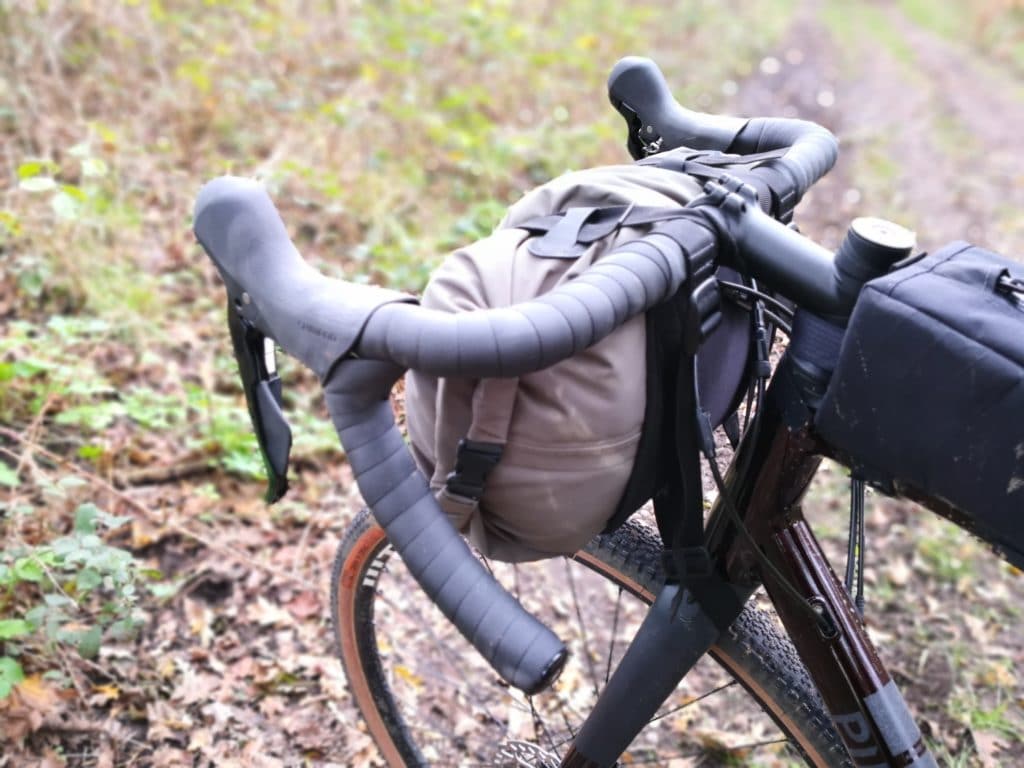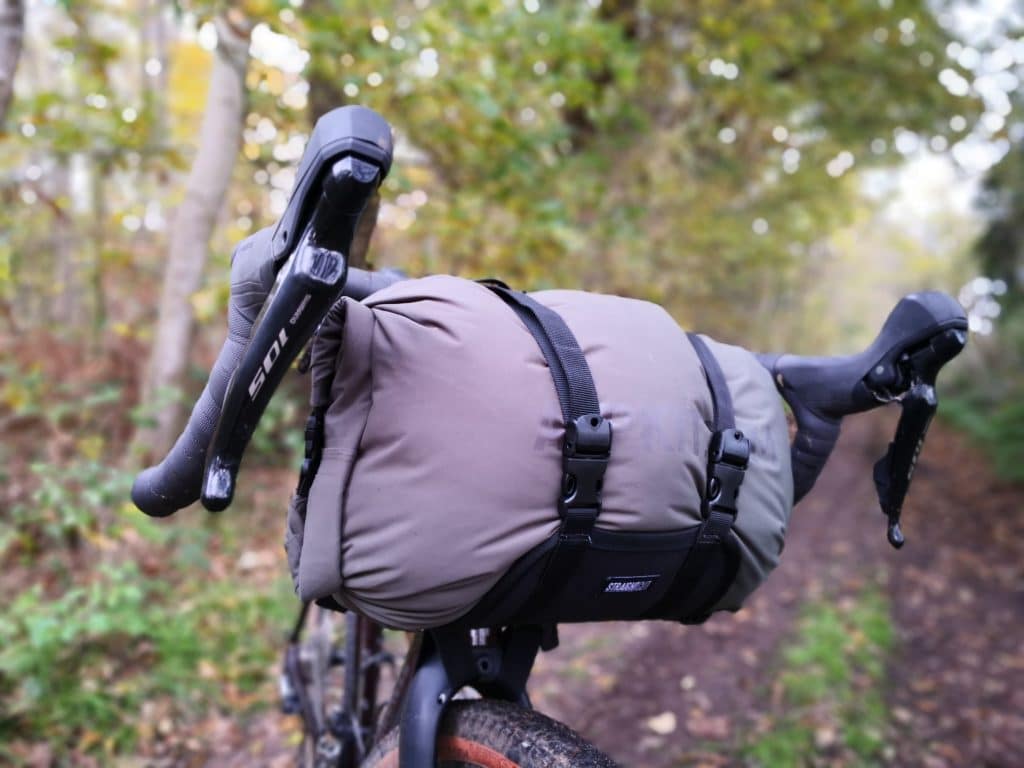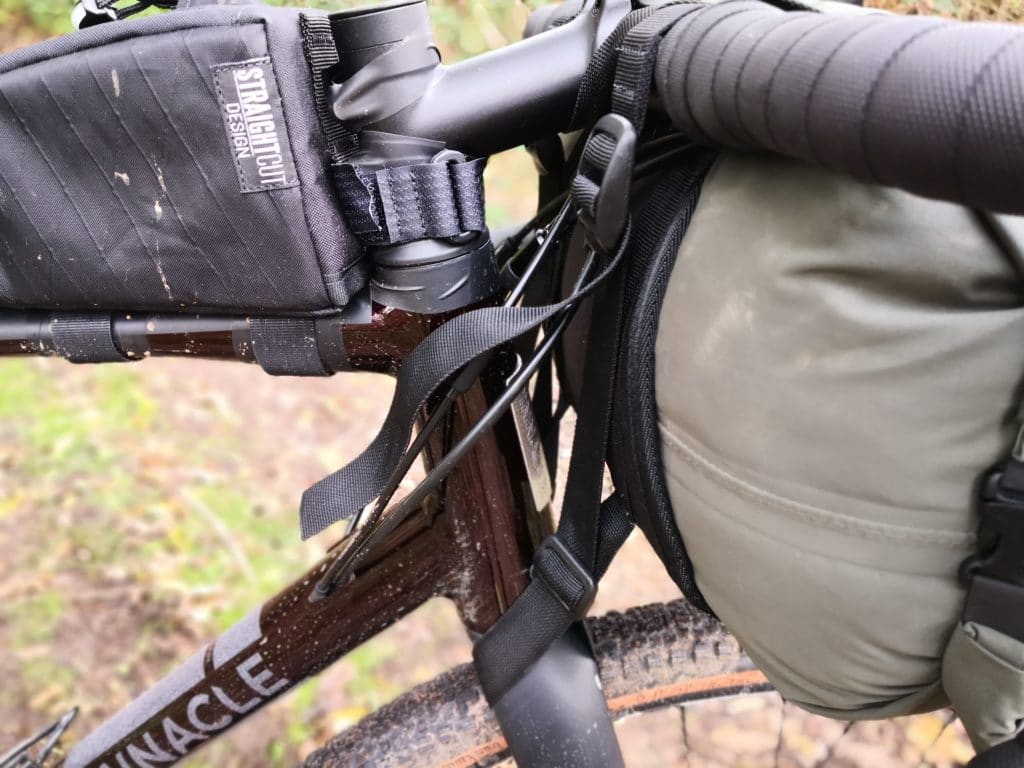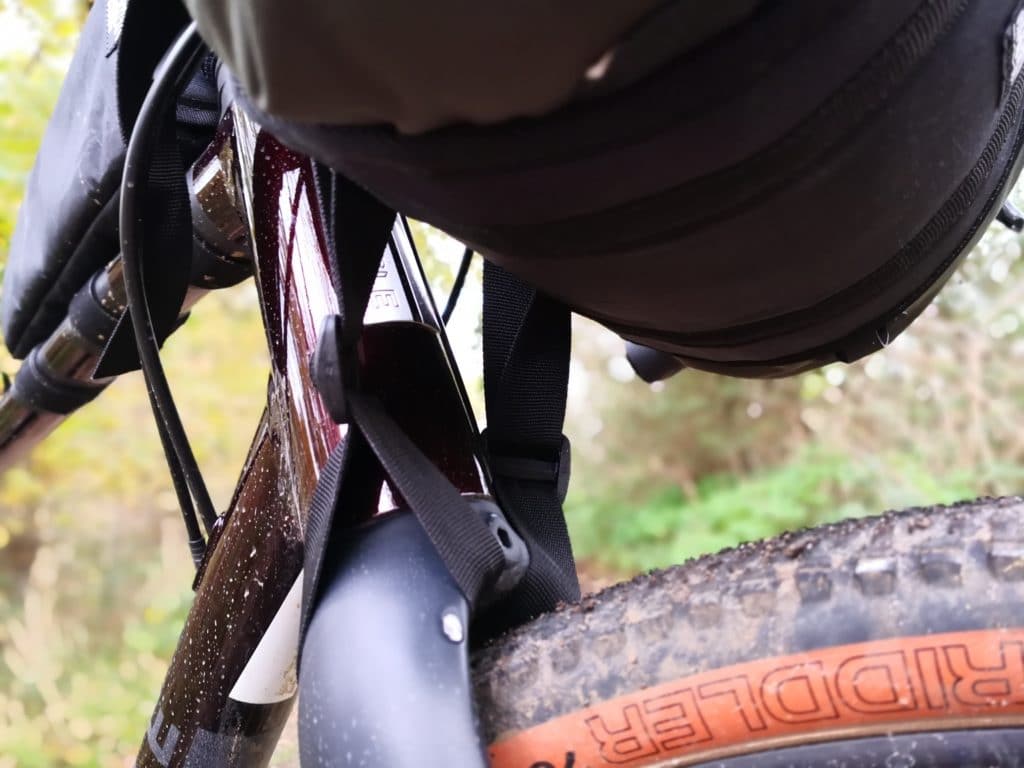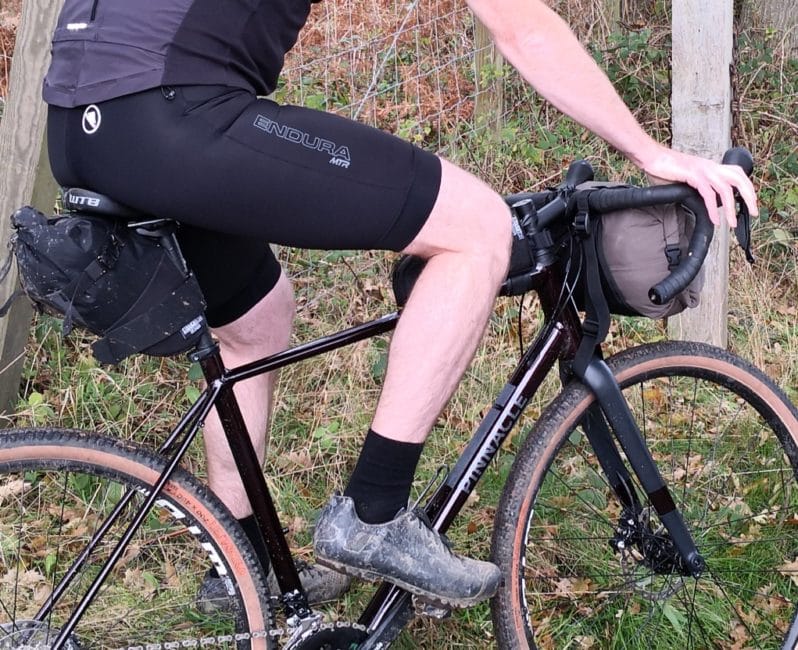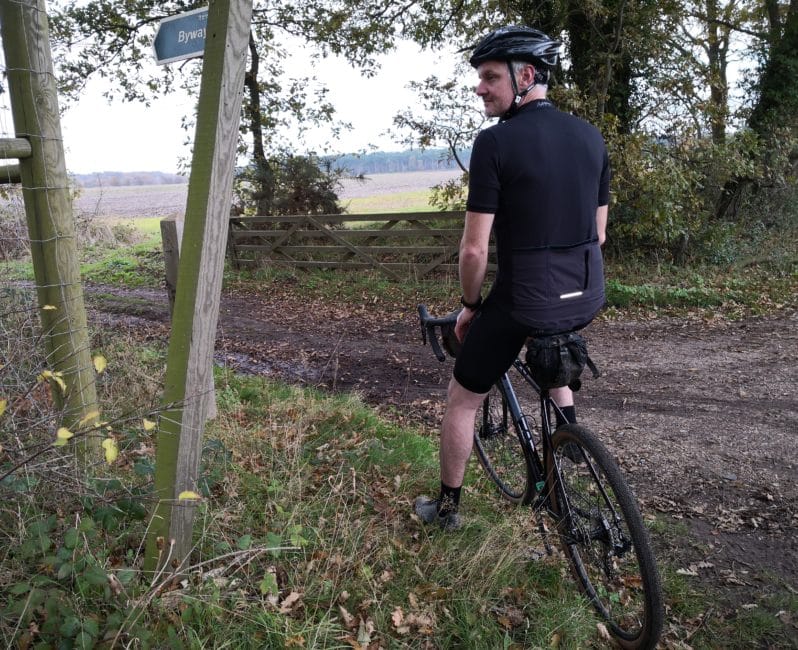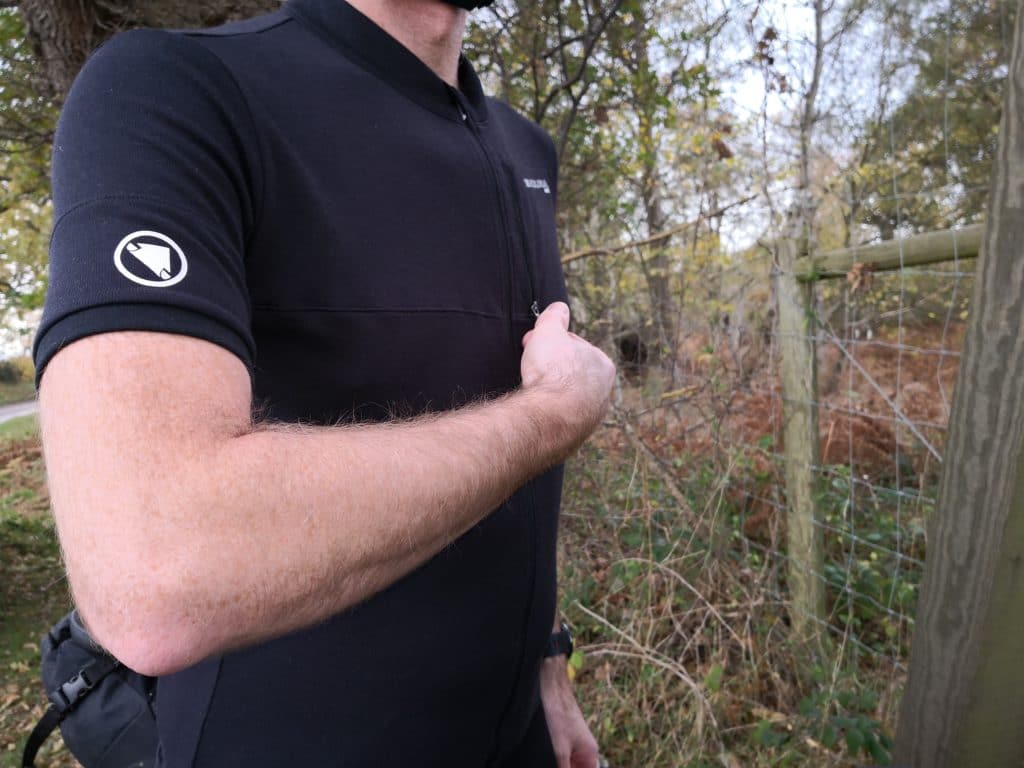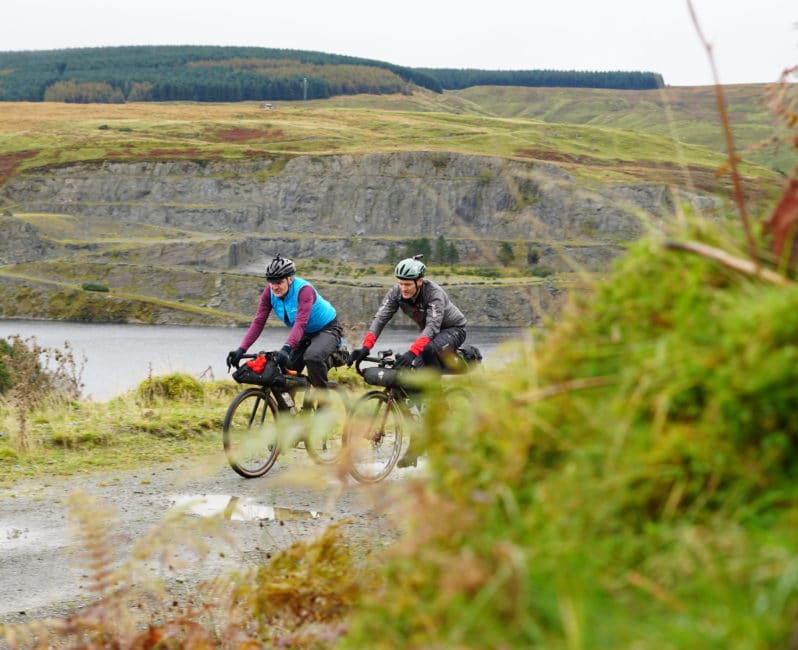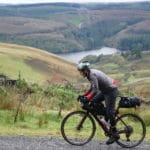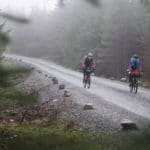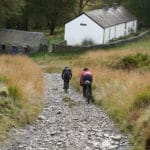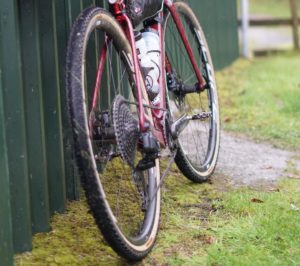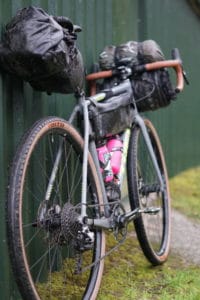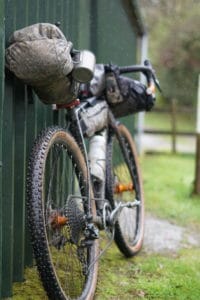From the Mid-West to Mid-Wales…
Back in 2014 Gravel bikes hadn’t hit the big time. Only a handful of riders were aware of the US scene, and dedicated bikes were few and far between. It was a bold move then for Ian Barrington of Wildcat Gear to suggest a UK gravel race. Set in Mid-wales, the Wildcat 100 promised a taste of the Mid-West. Despite this, there was plenty of interest, almost certainly because of Ian’s depth of knowledge when it comes to Cambrian trails and the popularity of Wildcat gear. Great location, great route, excited riders. What could possibly go wrong?
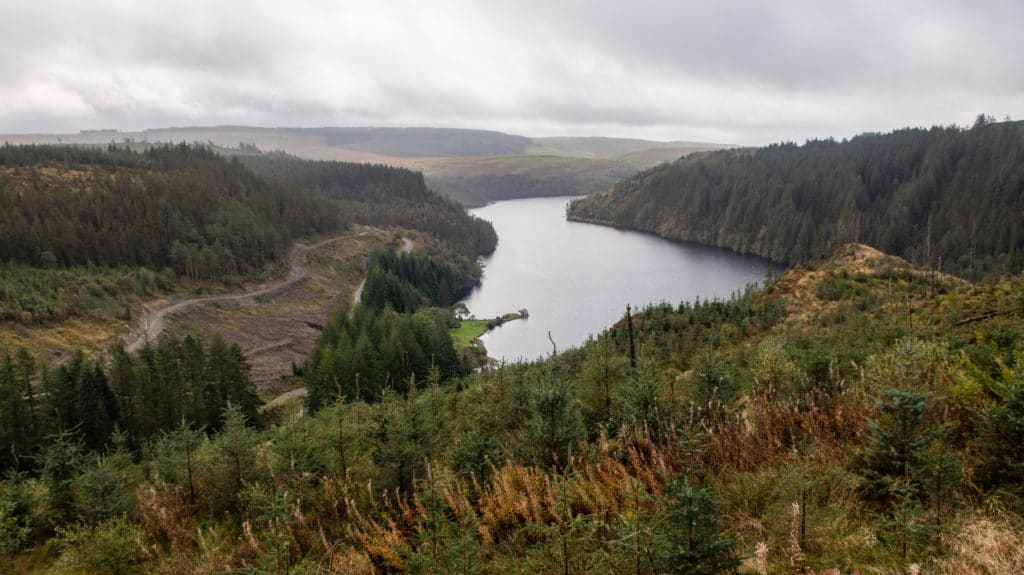
The best laid plans of mice and men
With a full roster of riders all eager to hit the gravel, the event suffered a blowout at the eleventh hour. With the Wildcat 100 making use of so many forestry logging roads, the route passed through almost every active harvesting site in the region. To ensure the safety of a mass-start event would take months of coordination with NRW, something that just wasn’t feasible. That left Ian with no choice but to pull the plug. While the event might have been shelved, the GPX route lived on for tackling at a more relaxed pace. If you travel solo, or in a small group and are happy to be flexible, you can re-route on the fly if you come across the lumberjacks doing their thing!

Back to the future
Fast forward to 2019 and gravel bikes are the next big thing. Pop into your local high street bike shop and you’ll probably find something that makes the 2014 Salsa Warbird with it’s 35c tyres look positively old hat. Events like The Dirty Reiver, Gritfest and Grinduro are well established, so perhaps the Wildcat 100 should remain in the history books? As one of those riders who received the Dear John email, the route felt like unfinished business. So why not take along some contemporary adventure bikes and see what happens?

Three different ways to skin a Wildcat… (G)road, Gravel and CX.
Route Highlights
Llyn Brianne – Starting at Llyn Brianne, you cross the highest dam in the UK (nearly 100m). For a track around a body of water there’s a surprising amount of climbing!
Soar Y Mynydd – Just 10km after crossing the dam you’ll take a fast descent into the Camddwr valley and be greeted by the most isolated chapel in Wales. While its name suggests that it’s a refuge in the mountains there’s no time to stop, immediately afterwards you have a punishing rubble strewn climb to contend with!
Ty’n Cornel & Dolgoch Hostels – These former farmhouses make ideal basecamps for tackling the Wildcat. The ride takes you through the yard of Ty’n Cornel, and Dolgoch is only a kilometre off the route.
The Elenydd – Reputedly the least populated region in the UK outside of the Highlands and it’s not hard to believe. In 1860 it was said “The locality we are now traversing is one of the most untamed and desolate in either division of the Principality; it has indeed with perfect truth been called the Great Desert of Wales.” With many of the farms and mines now crumbling ruins, it’s arguably even more deserted.
This is not a race
A very good inn that Talbot Arms- where they are always glad to see an English gentleman. I experienced very good entertainment at the Tregaron Inn.George Borrow, Wild Wales, 1854
“George Borrow went to Y Talbot on his walk around Wales, we should go there.”
“Yeah, but Google says the current owner trained under Marco Pierre White… lets go to the chippy.”
And with that, my dreams of following in the path of my fellow townsman were dashed, although certainly to the benefit of my bank balance. With two fish n’ chips ordered, we parked ourselves on the bench and waited for James Heaton from Wilderness Trail Bikes. James, a native South Walian arrived a few minutes later and while stuffing our faces with chips, we chatted about just how bad the weather forecast looked for the weekend… With the local postcodes covering several square miles of nothing, we took off in tandem relying on the trusty OS map to get us to our hostel.
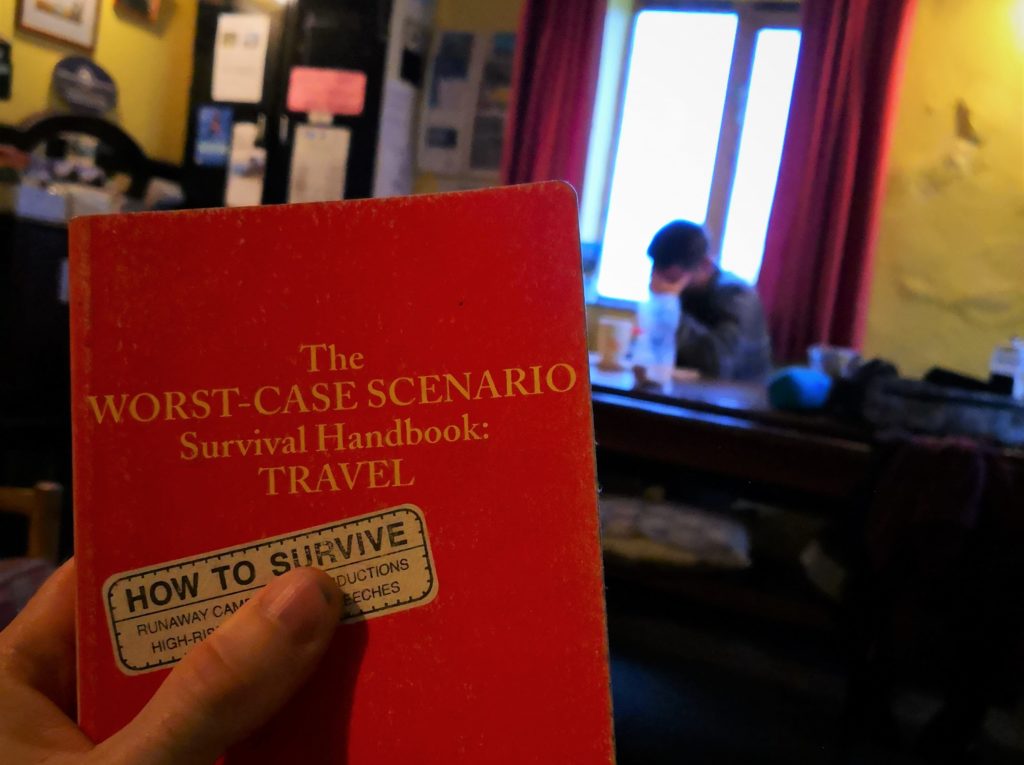
This might come in handy…
Triple trouble!
I’d ridden the track past the hostel years previously and remembered that the southern section was much worse than the north so I wasn’t too worried as we turned off the tarmac. However, threading a van, rather than a mountain bike down a meandering farm track redefines whether a track is OK. After a few utterances of “Are you sure?” the headlights finally picked out the hostel from the gloom.
With the log-burner in the hostel topped up, we hatched our plans for the ride ahead with our respective regional delicacies, Adnam’s Broadside and Tan Y Castell Welsh cakes. A true athletes supper!

All smiles the next day leaving the hostel when the promised deluge doesn’t materialise!
With the route passing close by, it made sense to start and finish from one of the Elenydd Hostels rather than the original start at the Llyn Brianne dam. Luck was on our side as Ty’n Cornel had vacancies and placed us directly on route. Relinquished by the Youth Hostel Association,Ty’n Cornel and Dolgoch Hostels were taken over by Elenydd Wilderness Hostels Trust. Run along the same principles as the YHA, the trust relies upon volunteers to take on fortnightly shifts as hostel wardens.
If you think the Wilderness label might be a bit OTT consider this. When Ty’n Cornel was a working farm (up until the 1950s) the children of the household would have to lodge in the next village to attend school and a visit to chapel on Sunday might be the only time you saw your neighbours outside of shearing season! A newspaper clipping from 2003 reports farms in the valley were finally being connected to mains electricity!
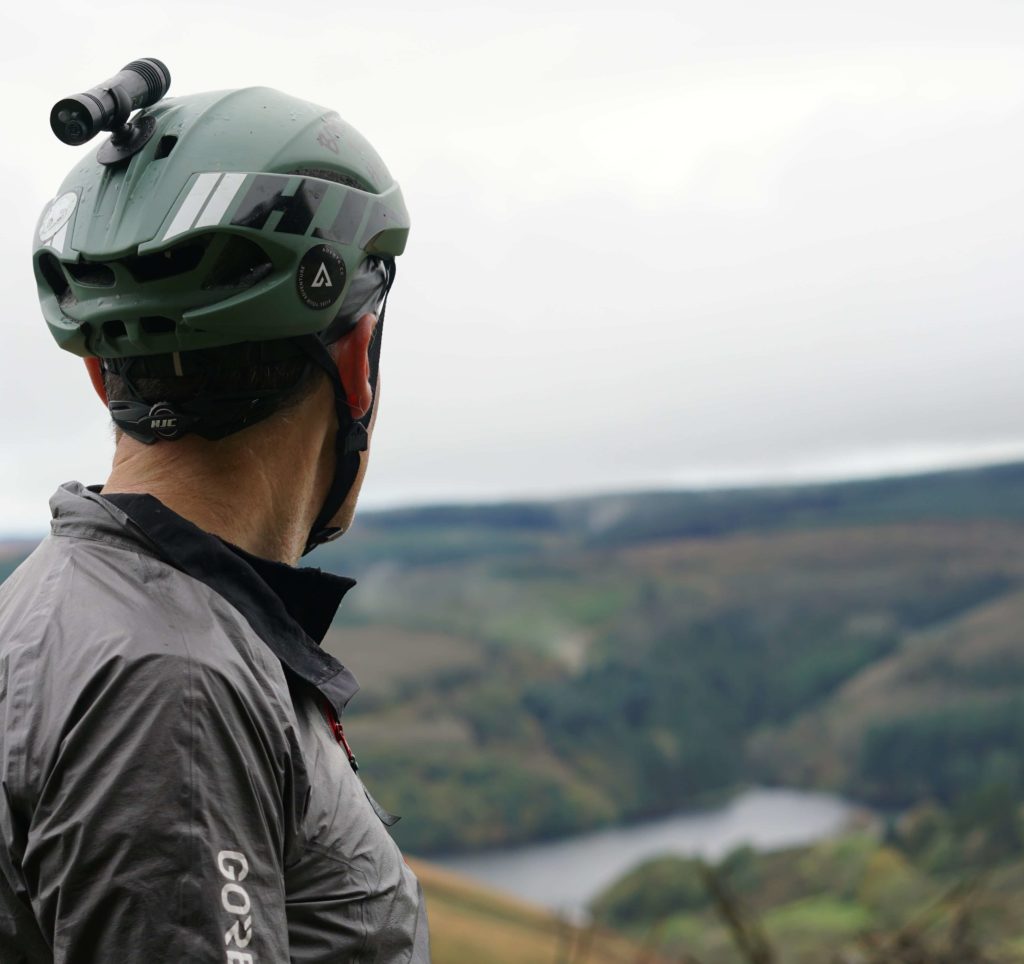
The climbs were often rewarded with some spectacular views.
Quick detour
We have to confess to taking a cheeky short-cut at the start. There are three fords en-route that can turn nasty, so we wanted to make sure they were behind us before the heavens inevitably opened. A rapid descent led to a stream that needed hopping before turning into a climb that picked us off one by one until we were all pushing. The reward for cresting the summit was a view that let us know what we would be in for, solitude!
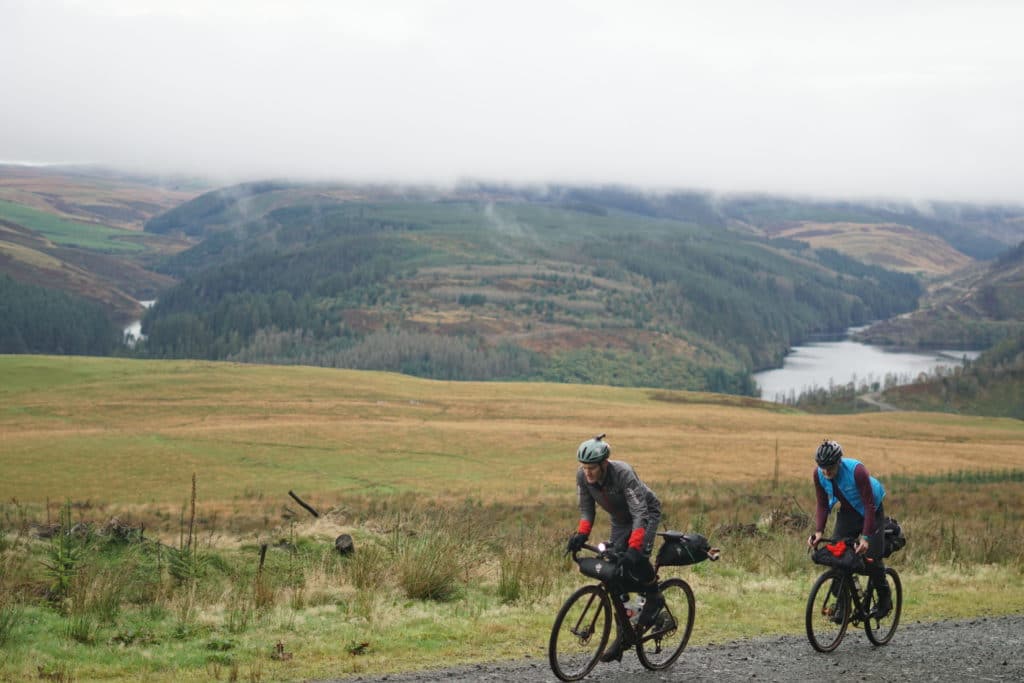
Will ham it up for the camera in exchange for Haribo.
Of course, this being Wales, the climbing was far from done. The moorland tracks took the steepest, most direct route over the landscape while the labyrinth of Forestry tracks corkscrewed in endless spirals. Just as we felt our legs cry “enough!” , we’d round the next corner and gravity would throw us the base of the next climb. And so the winching began again…

Winching up the next climb.
The Bikes
Salsa Warroad
Our choice of bikes for re-visiting the Wildcat shows how the scene has progressed since 2014. Salsa have doubled-down on gravel and the veteran Warbird & Vaya have both been heavily revised and joined by the Cutthroat, Journeyman and my ride for the Wildcat, the Warroad. It’s geometry is close to the 2014 Warbird but is sold as a bike primarily for road and occasional gravel. It’s testament to Salsa’s designers that a roadbike didn’t bat an eyelid at any of the countless rubble strewn descents! Of course, this roadbike came with 650b x 47c treads while the original Warbird made do with narrower rubber.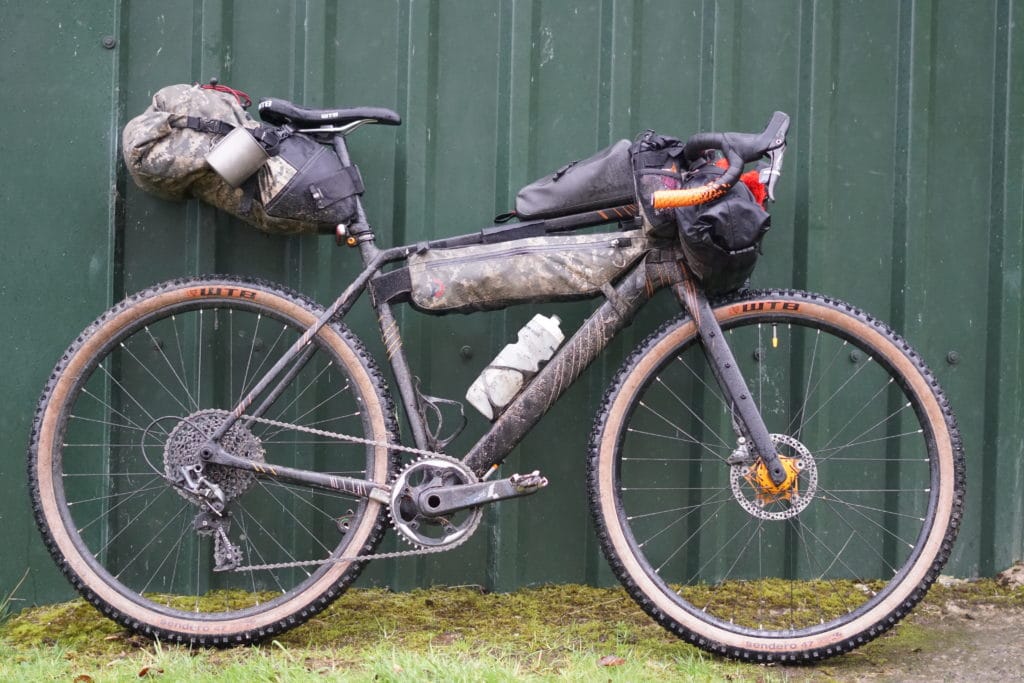
Stretching the definition of road to its limit!
Cervelo Aspero
Cervelo’s first foray into the gravel sector and it’s unashamedly racy. If you dressed it up with slick tyres, it wouldn’t look out of place on a Sunday club run. A huge, stout downtube blends into an even stouter bottom bracket junction. Out back, the chainstays are the complete opposite to the Salsa’s comfort orientated, bowed seat stays. The Aspero’s short wheelbase and beefy rear triangle are all about transferring power. “Haul ass, not cargo” was the tagline at launch. So naturally, the first thing we decided to do was load it up the hilt with bikepacking luggage! Far from standard, this Cervelo carried a huge range of gears courtesy of a SRAM AXS Eagle/Force ‘mullet’ combo and super light but strong, Scope O2 carbon wheels.
Haul ass, not cargo. Why not both?
Trek Crockett
A cyclocross bike like the Crockett is the Genesis of the gravel bike for many. Taking all-weather capability and pairing it with more stable geometry for long distance rides with (hopefully) less obstacles to carry over! Cyclocross design hasn’t stood still and the Crockett is a great example of the nu-skool CX bike. More relaxed angles, hydraulic discs and wider clearances make this a bike to venture beyond the race tape.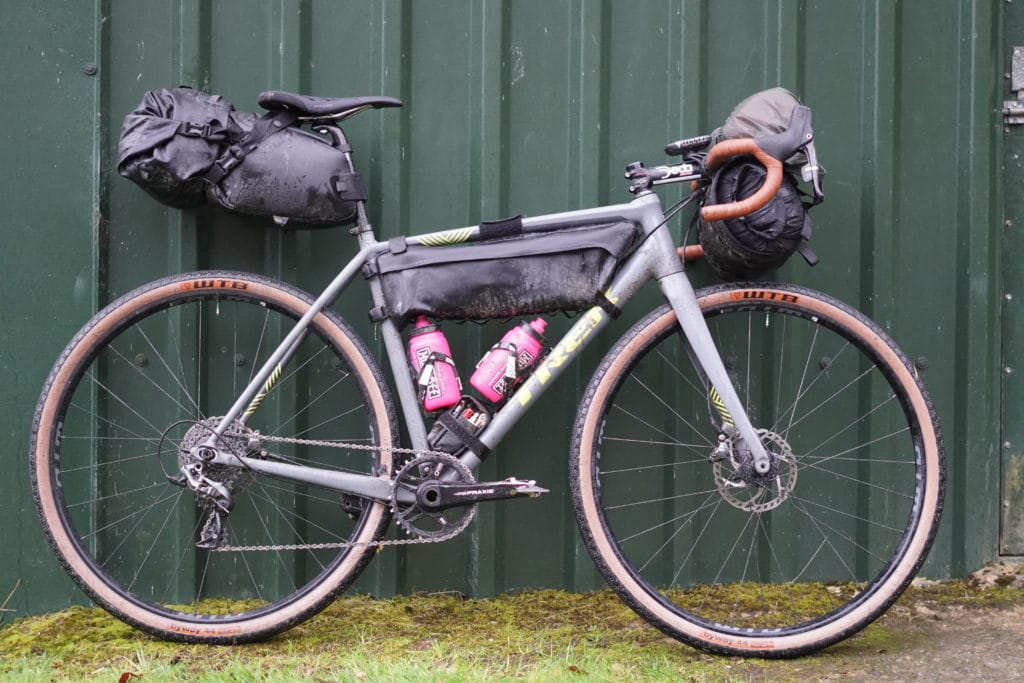
Throw away that CX rule book!
It’s not just the bikes that have evolved
As gravel bikes have evolved, component suppliers have had to keep pace with demands. There’s no need to rely on ‘cross tyres, when you can find better all-rounders, and more specialised treads. On this trip we used WTB’s 700 Venture 40c, Byway 44c and the 650b Sendero 47c.
Unsurprisingly, the WTB Byway excelled on tarmac and dry terrain. However it more than held it’s own on some of the rockier sections of trail. Behaving just like a miniature MTB tyre, the Sendero hooked up in the gloop and railed loose corners. Undoubtedly the while Ventures split the difference as the capable all rounder.
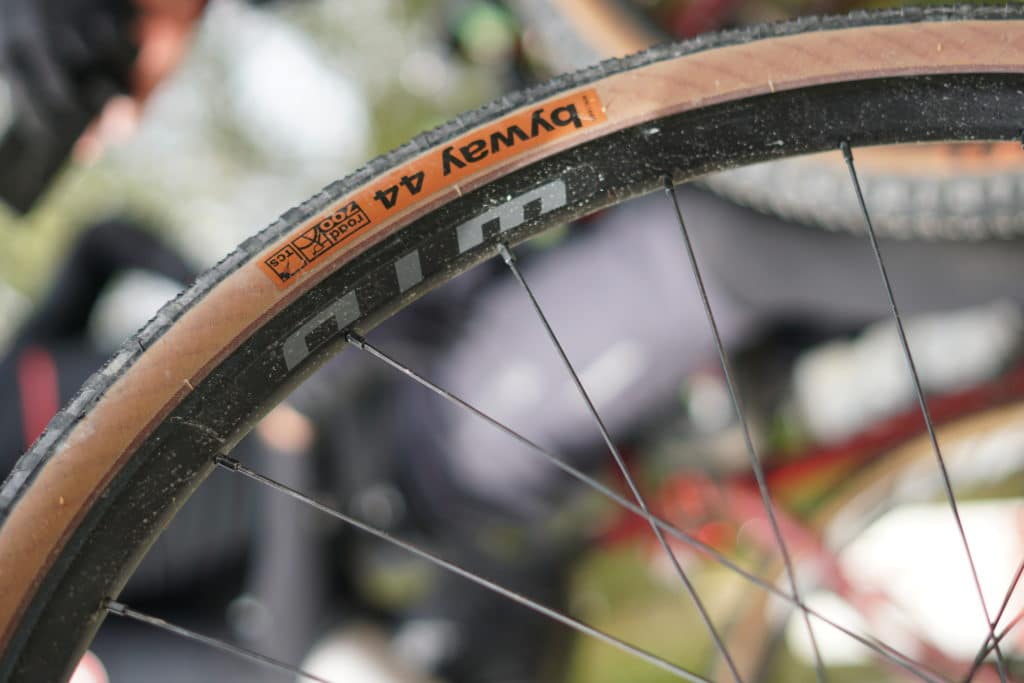
More capable than you’d ever give it credit for. The WTB Byway 700×44
For me, the WTB Sendero was the stand out tyre of the ride. The extra confidence it gave on rough descents didn’t punish with excessive drag on smoother surfaces. No doubt us all running tubeless helped with grip and comfort while warding off punctures.
Limited Resupply
One obvious side-effect of riding in a remote location is the need for self-sufficiency. The route is designed so that riders pass through Llanwrtyd Wells during daylight hours. This is your one and only opportunity to stock up. When you next get close to town, it’ll most likely be Sunday morning and the shutters will be down! Llanwrtyd is a veritable Oasis in the desert of Wales with pubs, cafes and a corner shop on hand. We chose the Neuadd Arms, incidentally the Welsh HQ for The Monster Raving Loony Party. With what we had planned, it seemed appropriate!
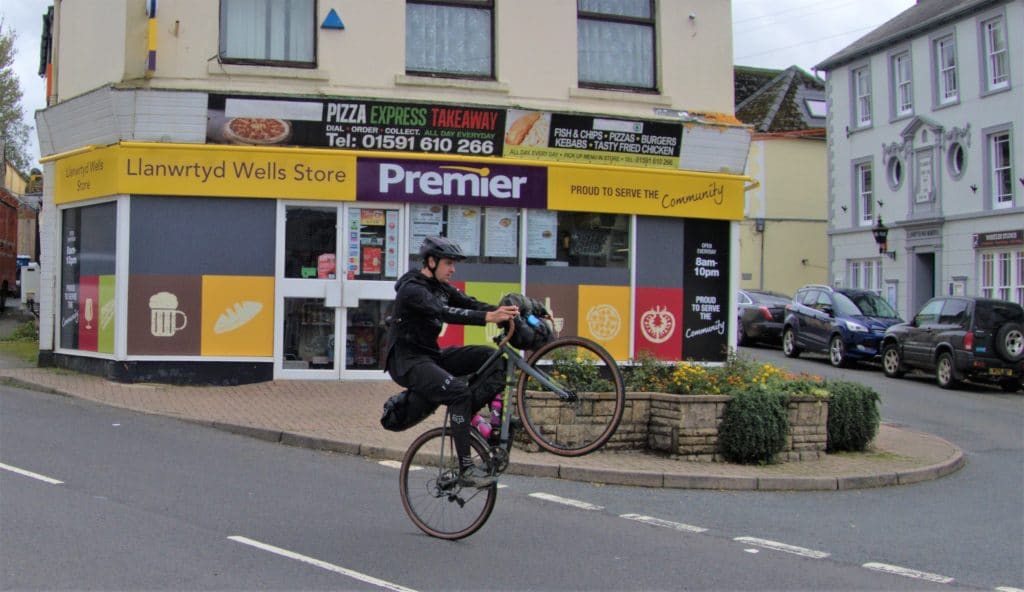
Finding a convenience store was indeed cause for celebration.
The Green Labyrinth
After stocking up we hit the trail again, heading for Crychan Forest. It felt like most of the next 40km were spent in dense forest. As the light began to fade, the trails grew steeper and twistier. With legs tiring, it was all too easy for our small group to split as we settled into our climbing cadence.
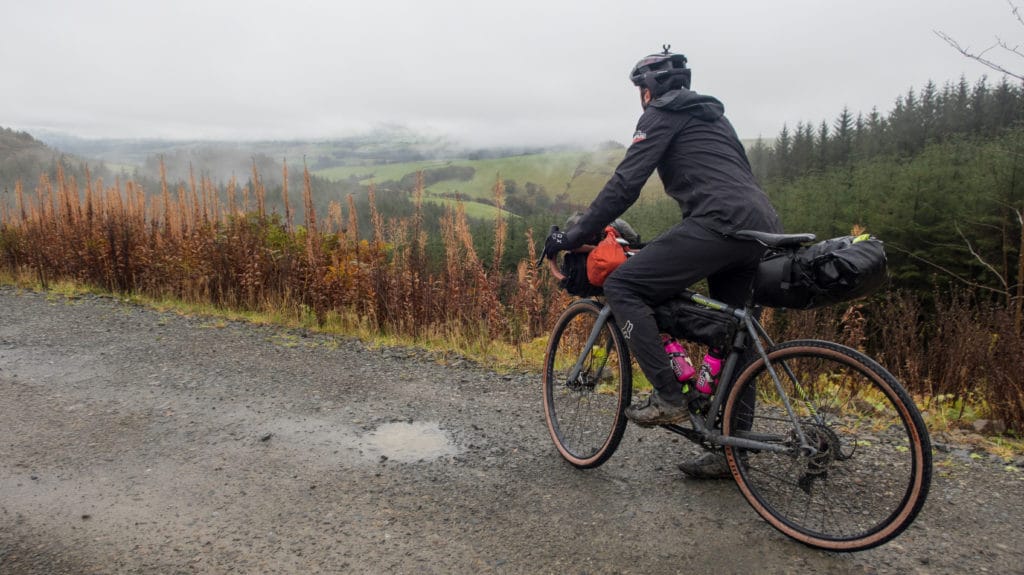
A brief break in the thick forest allows us to find our bearings.
The intermittent showers we’d had throughout the day now became proper rain. The decision was made to set up camp if a break in the rain coincided with a decent spot.
Light rain on your tent can be hypnotic, heavy rain can keep you awake. Neither compare to sustained bursts of gunfire at 2.30 a.m. a literal wake up call that we were in the vicinity of the Sennybridge military training area! There was no hanging about at sunrise to strike camp and finish the final leg of the tour!
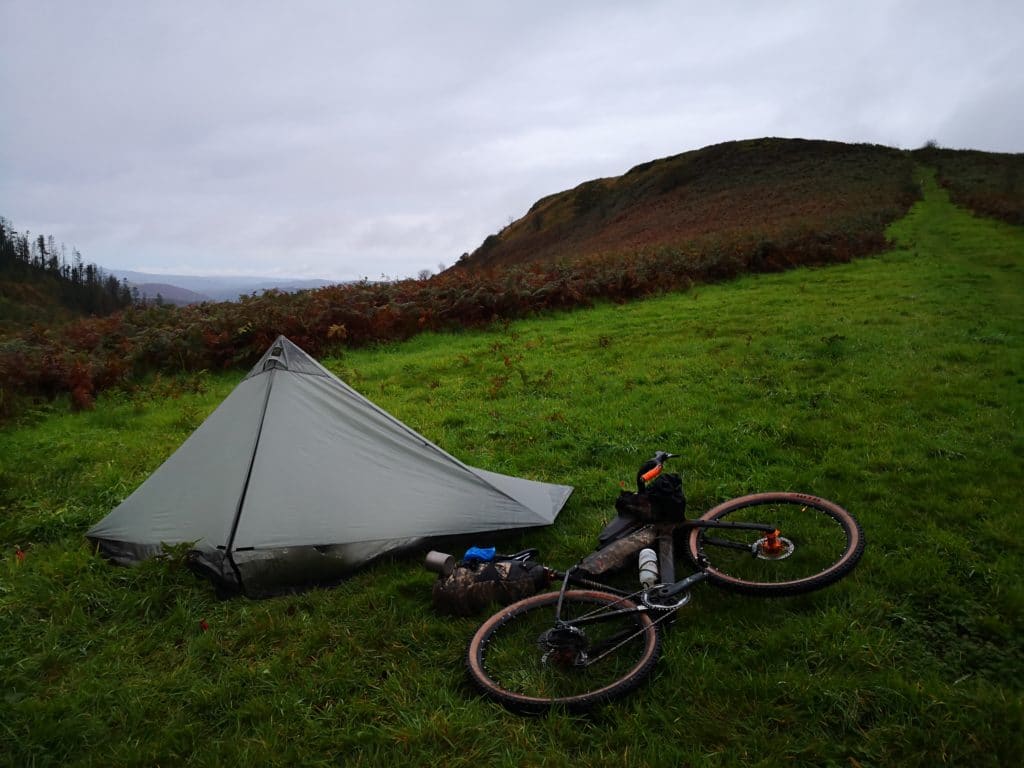
Air B&B review: Three stars, great views, shame about the gunfire!
The last 40km were a delight, the relentless forest and mist finally giving way to stunning views across the empty Elenydd. Our first encounter with people since leaving Llanwrtyd came as we approached the Dam holding back the waters of Llyn Brianne. A great spot to stop and take in the great expanse of the reservoir and to be mesmerised by the frothing spillway.
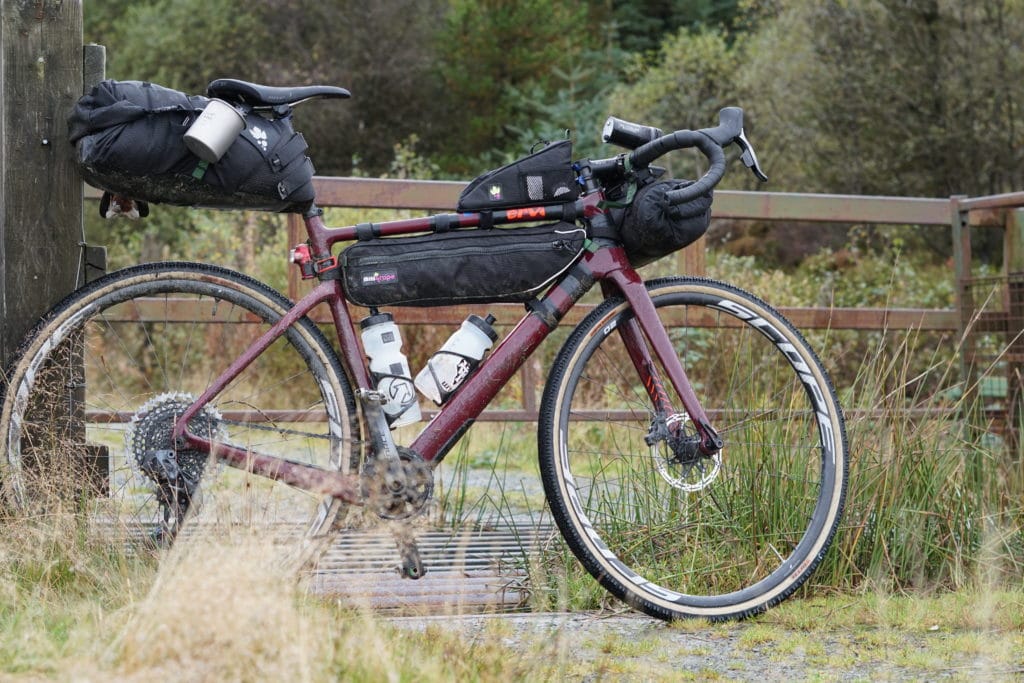
Refuge in the mountains
The final milestone for us was reaching Capel Soar-y-Mynydd. The most remote chapel in Wales, with its whitewashed walls a beacon to aim for. Stepping inside is like stepping back in time. Bolt upright pews evoke thoughts of an alert congregation receiving a sermon from a fiery preacher!
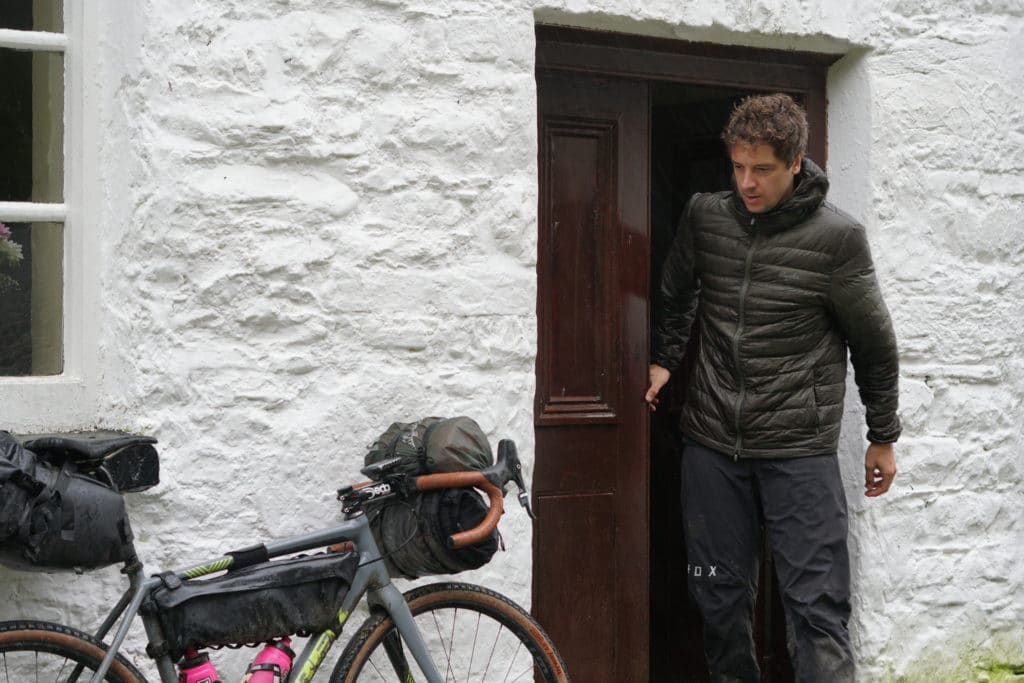
Done preaching to the gospel of WTB, James hops back on his bike.
Outside the graveyard has but three headstones, likely a reflection of how the harsh life of a hill-farmer wasn’t a route to great wealth. Standing here, you get that impression that very little has changed in decades and there is little to no sign of our modern life having intruded upon this timeless valley. The spell is suddenly shattered as a group of 2-stroke scramble bikes rattle down the hillside at full chat. And with that, we press on from the chapel and up yet another rocky climb.

Solitude. We found it.
We had less than an hours riding left but it was some of the most memorable. The rough climb out of the Camddwr valley became a competition to see who could get the furthest without dabbing. Crossing the plateau of Foel Fraith served to etch in our minds just how barren the landscape could be. As we splashed through the ford crossing the Doethie, we knew that while we had a hundred metres to go, our erstwhile racers would have had a hundred miles left to complete!

When you’re already wet, who cares about a river crossing?
Reflection on the route
Chapeau to Ian for the excellent route, mostly avoiding any sign of human life, let alone traffic. The trails can be rough but are all rideable with only your fitness levels deciding if you need to hop off and push. If you really want to get away from it all on your gravel bike, this is the route to take! If 170km seems too daunting the route lends itself to being easily adapted by short-cuts.
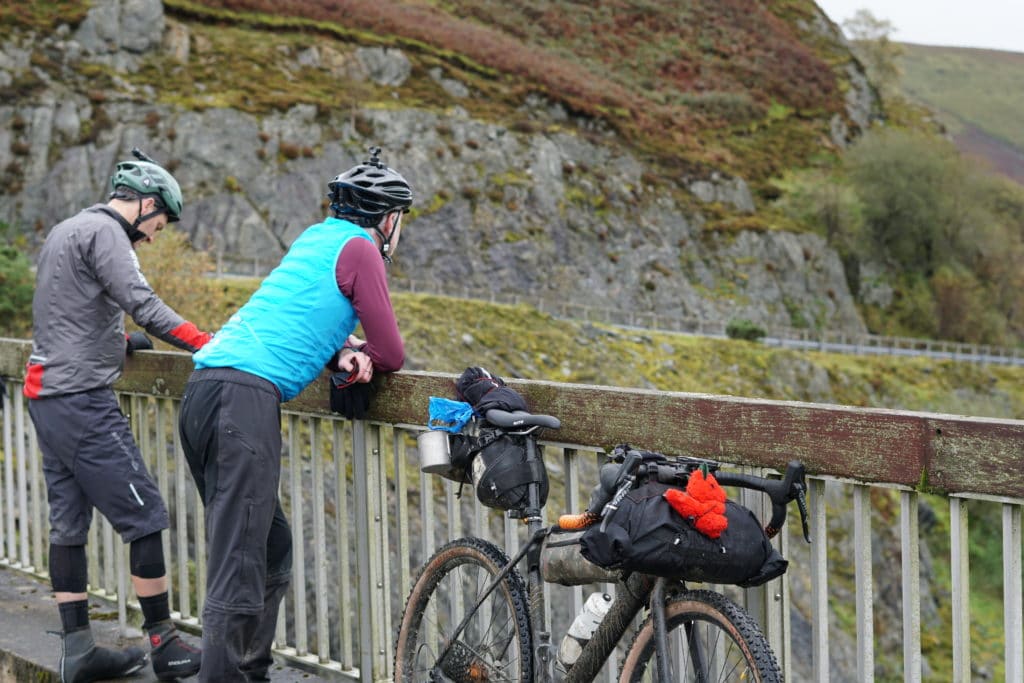
“So when shall we try the 200 mile route? Summer? Ok then…”
Our thanks to….
Wilderness Trail Bikes
Elenydd Wilderness Hostels Trust

